Liberal Party Worksheets
Do you want to save dozens of hours in time? Get your evenings and weekends back? Be able to teach about the Liberal Party to your students?
Our worksheet bundle includes a fact file and printable worksheets and student activities. Perfect for both the classroom and homeschooling!
Resource Examples
Click any of the example images below to view a larger version.
Fact File
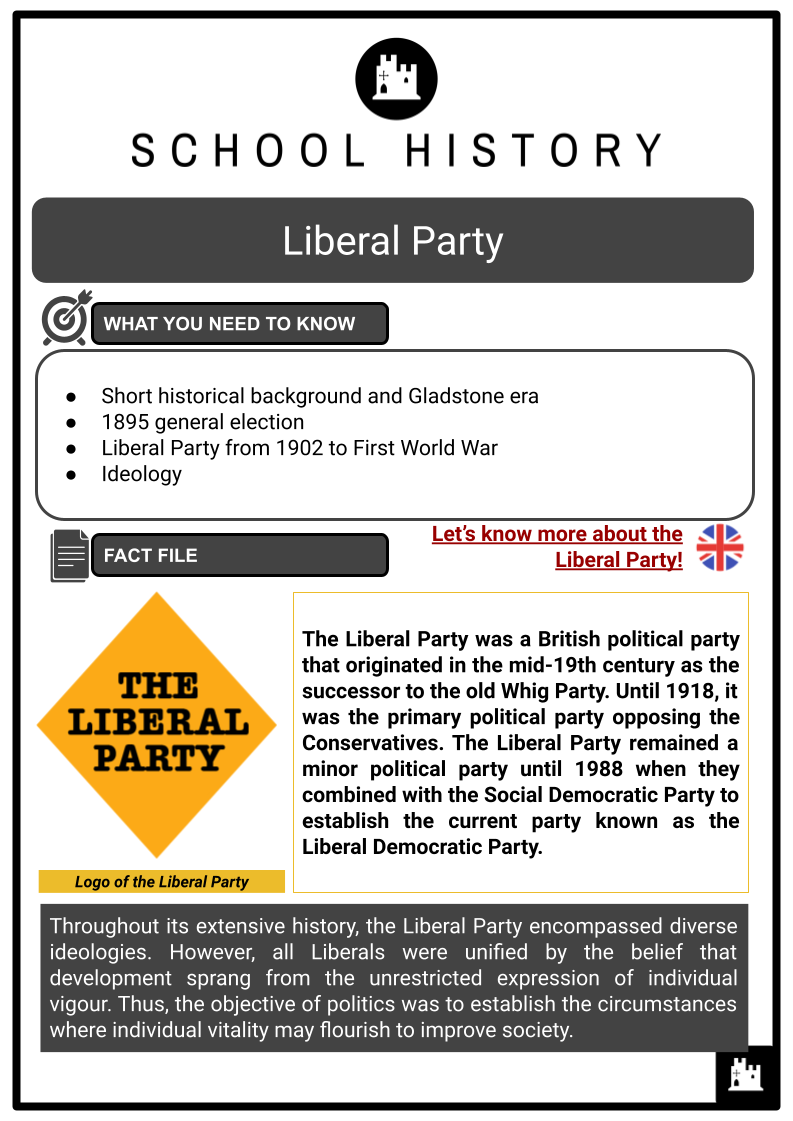
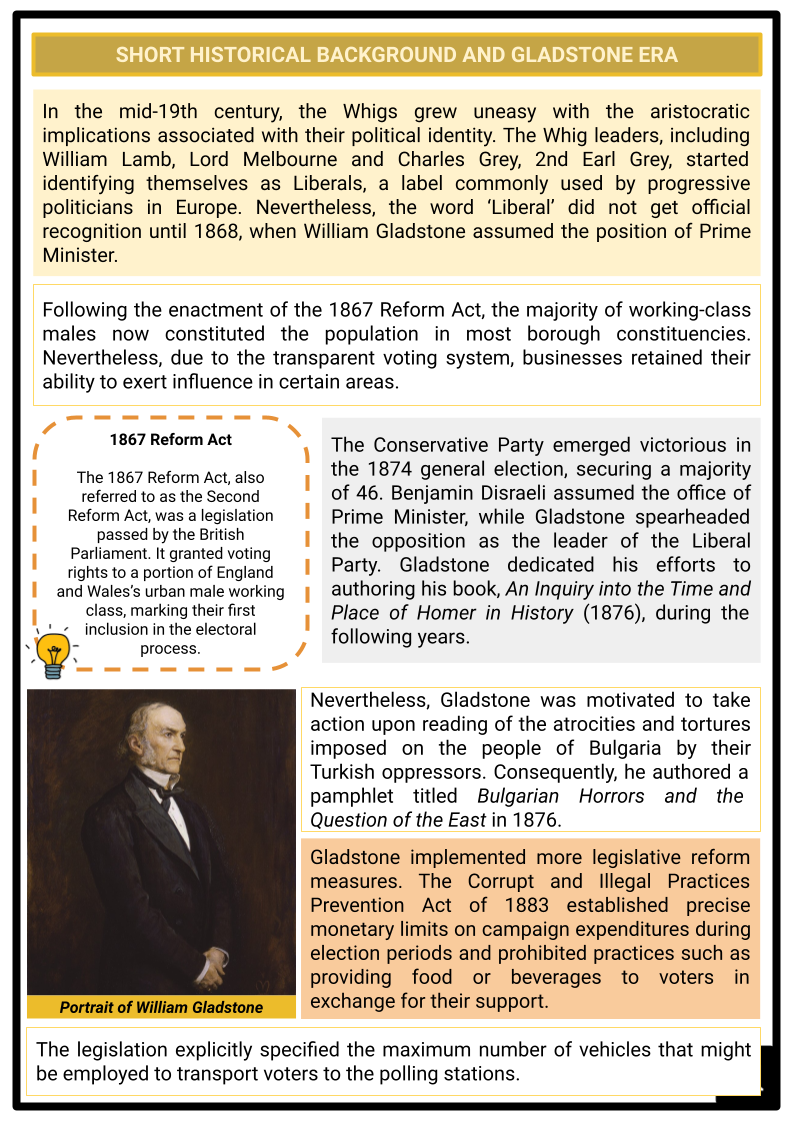
Student Activities
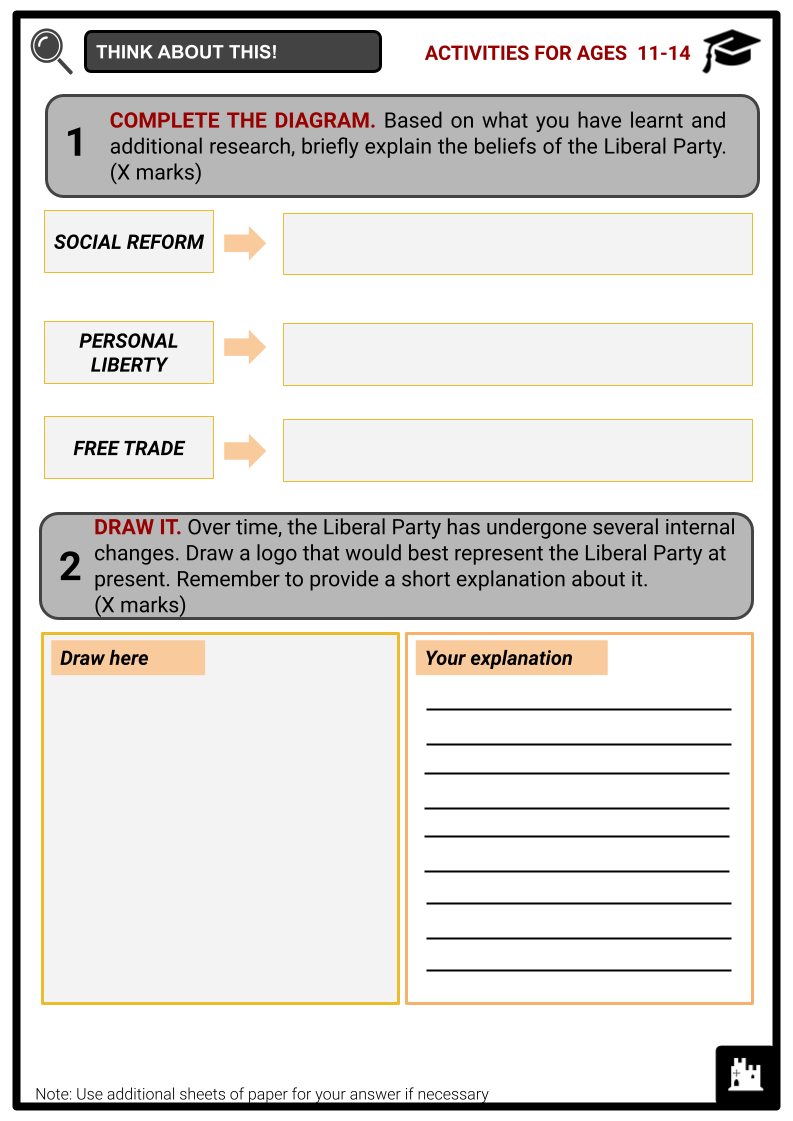
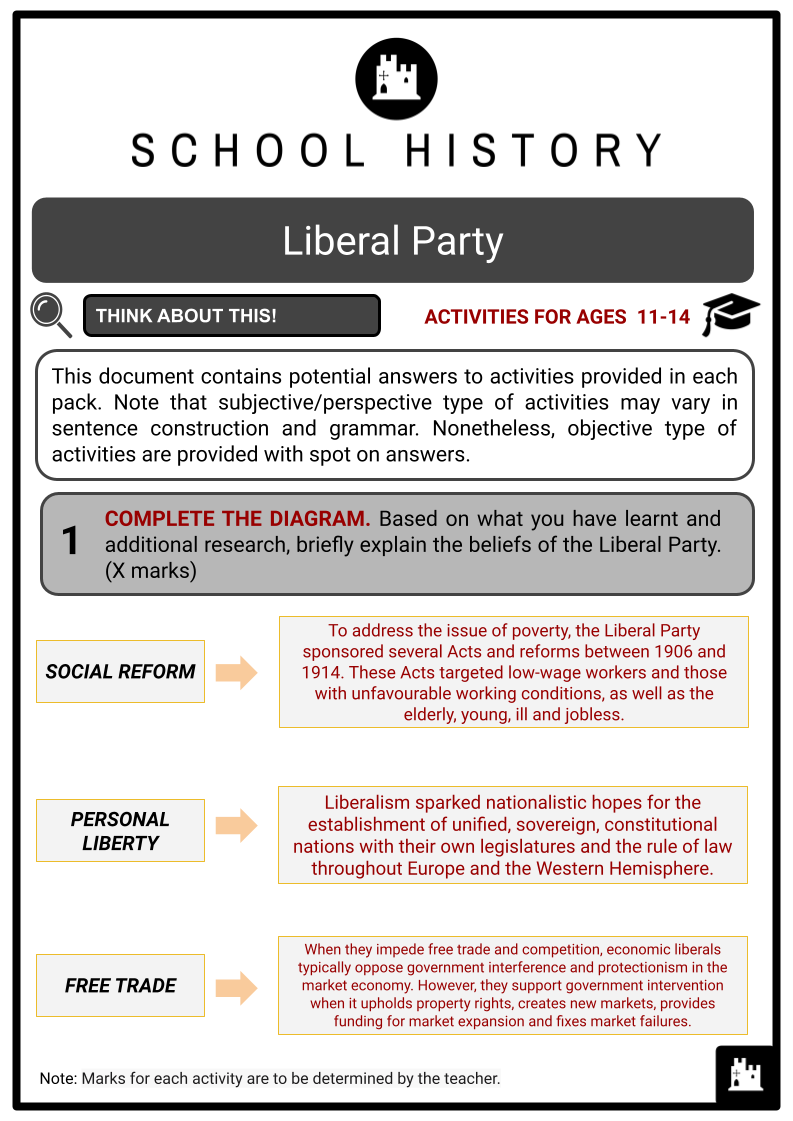
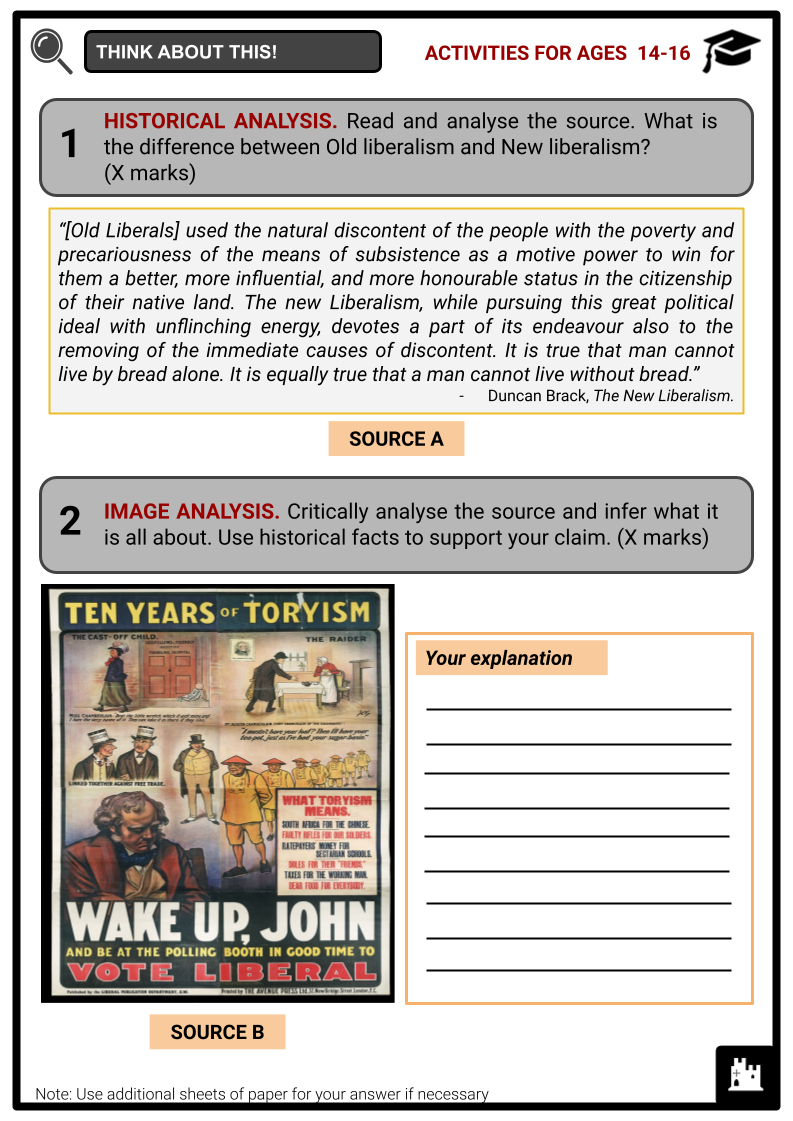
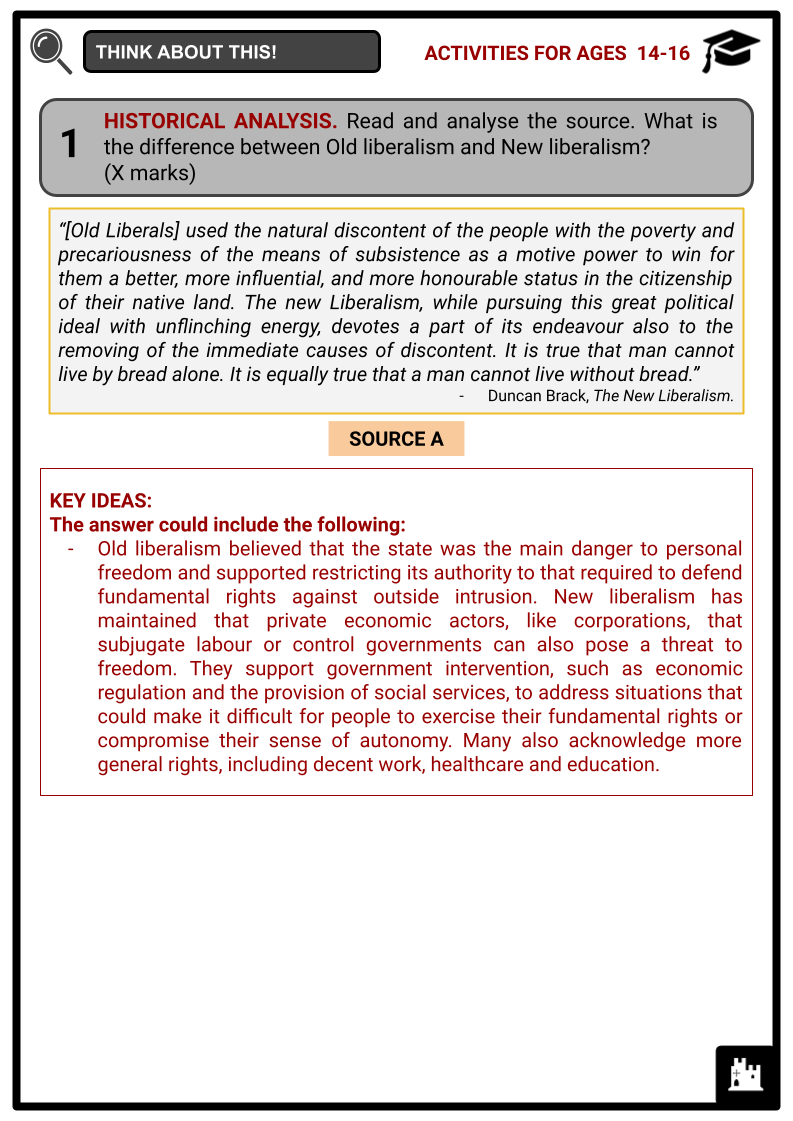
Summary
- Short historical background and Gladstone era
- 1895 general election
- Liberal Party from 1902 to First World War
- Ideology
Key Facts And Information
Let’s know more about the Liberal Party!
The Liberal Party was a British political party that originated in the mid-19th century as the successor to the old Whig Party. Until 1918, it was the primary political party opposing the Conservatives. The Liberal Party remained a minor political party until 1988 when they combined with the Social Democratic Party to establish the current party known as the Liberal Democratic Party.
Throughout its extensive history, the Liberal Party encompassed diverse ideologies. However, all Liberals were unified by the belief that development sprang from the unrestricted expression of individual vigour. Thus, the objective of politics was to establish the circumstances where individual vitality may flourish to improve society.
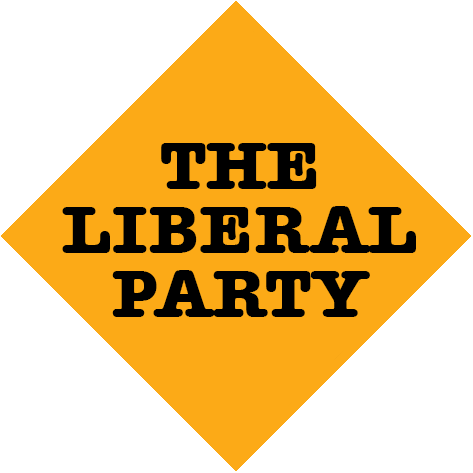
SHORT HISTORICAL BACKGROUND AND GLADSTONE ERA
- In the mid-19th century, the Whigs grew uneasy with the aristocratic implications associated with their political identity. The Whig leaders, including William Lamb, Lord Melbourne and Charles Grey, 2nd Earl Grey, started identifying themselves as Liberals, a label commonly used by progressive politicians in Europe. Nevertheless, the word ‘Liberal’ did not get official recognition until 1868, when William Gladstone assumed the position of Prime Minister.
- Following the enactment of the 1867 Reform Act, the majority of working-class males now constituted the population in most borough constituencies. Nevertheless, due to the transparent voting system, businesses retained their ability to exert influence in certain areas.
1867 Reform Act
The 1867 Reform Act, also referred to as the Second Reform Act, was a legislation passed by the British Parliament. It granted voting rights to a portion of England and Wales’s urban male working class, marking their first inclusion in the electoral process.
- The Conservative Party emerged victorious in the 1874 general election, securing a majority of 46. Benjamin Disraeli assumed the office of Prime Minister, while Gladstone spearheaded the opposition as the leader of the Liberal Party. Gladstone dedicated his efforts to authoring his book, An Inquiry into the Time and Place of Homer in History (1876), during the following years.
- Nevertheless, Gladstone was motivated to take action upon reading of the atrocities and tortures imposed on the people of Bulgaria by their Turkish oppressors. Consequently, he authored a pamphlet titled Bulgarian Horrors and the Question of the East in 1876.
- Gladstone implemented more legislative reform measures. The Corrupt and Illegal Practices Prevention Act of 1883 established precise monetary limits on campaign expenditures during election periods and prohibited practices such as providing food or beverages to voters in exchange for their support.
- The legislation explicitly specified the maximum number of vehicles that might be employed to transport voters to the polling stations.
- In 1884, Gladstone presented his propositions to grant working-class males equal voting rights to those residing in the boroughs. Despite being approved in the House of Commons, the bill was ultimately rejected by the House of Lords, which the Conservative Party predominantly controlled.
- Gladstone adamantly rejected defeat and subsequently revived the measure. On this occasion, the Conservative members of the House of Lords consented to approve Gladstone’s propositions in exchange for the assurance that a Redistribution Bill would succeed it.
- Gladstone acquiesced to their conditions, so the 1884 Reform Act was permitted to be enacted. This policy granted the counties the same voting rights as the boroughs, allowing adult male homeowners and £10 lodgers to vote. As a result, almost six million individuals were added to the overall number of eligible voters in parliamentary elections.
Redistribution of Seats Act 1885
A law that aimed to redistribute the seats in the House of Commons in a way that would create constituencies with equal populations. The concept of equal apportionment was introduced to ensure fair representation throughout the United Kingdom.
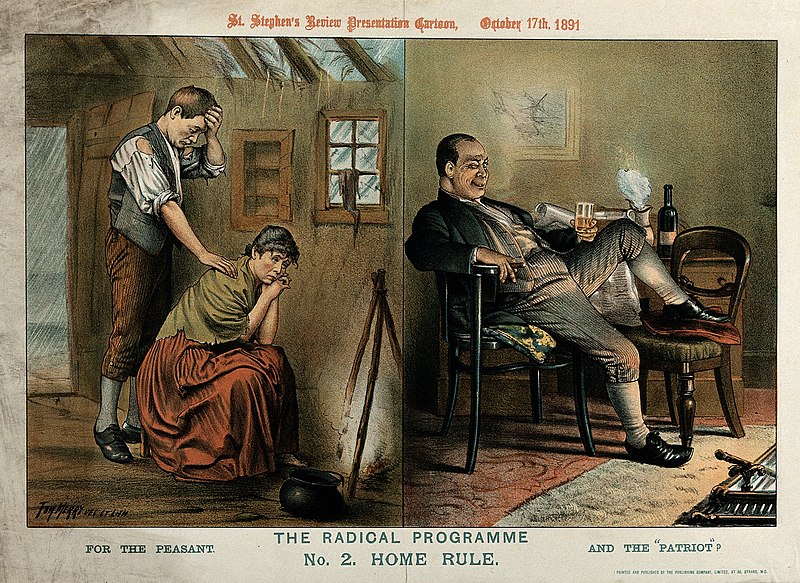
- Gladstone and the Liberal Party emerged victorious in the 1886 general election. Gladstone endeavoured to persuade Parliament to embrace Irish Home Rule. The Home Rule bill stipulated that the British government would continue to have authority over financial institutions, foreign policy, and security. It only permitted limited devolution. The plan caused a division within the party, and Parliament ultimately voted against the measure.
- Gladstone suffered a setback in the polls during the 1886 general election, although he was subsequently re-elected to government in 1892. In the subsequent year, the Irish Home Rule Bill was approved by the House of Commons but faced defeat in the House of Lords.
1895 GENERAL ELECTION
- Gladstone ultimately retired in 1894. Gladstone’s endorsement of the Irish Home Rule caused significant polarisation within the party, resulting in the loss of its upper and upper-middle-class constituents. However, it managed to maintain support among Protestant nonconformists and the Celtic fringe. Queen Victoria ignored Gladstone’s recommendation to nominate John Spencer, 5th Earl Spencer, as his successor and chose Archibald Primrose, 5th Earl of Rosebery, as the new Prime Minister.
- Rosebery’s administration experienced significant immobilisation due to a power struggle between him and William Harcourt, the leader of the Liberal Party in the House of Commons.
- On 21 June 1894, the crisis reached a critical point when Parliament voted to remove Secretary of State for War Henry Campbell-Bannerman. Understanding that the administration would not survive a motion of no confidence, Rosebery subsequently resigned as Prime Minister.
- Robert Gascoyne-Cecil, 3rd Marquess of Salisbury, the head of the Conservative Party, was re-appointed for a third term as Prime Minister. The Marquess of Salisbury immediately called for a new election.
- The Conservatives emerged victorious in the election, maintaining their coalition with the Liberal Unionist Party and securing a substantial majority. In contrast, the Liberals experienced a significant decline, achieving their worst result since the party’s establishment by obtaining only 177 seats.
- During this period, the Irish Parliamentary Party experienced a division. Most of its Members of Parliament, known as the Anti-Parnellites, supported John Dillon, while a smaller group, referred to as the Parnellites, followed John Redmond.
- In 1893, the Independent Labour Party, which had previously been an informal association of left-wing politicians, officially established itself as a political party under the leadership of Keir Hardie. They then participated in their inaugural election. In the previous election, they received minimal attention, securing slightly less than one per cent of the total votes and failing to gain seats. However, their fortunes improved significantly five years later when they contested the election as part of the Labour Representation Committee.
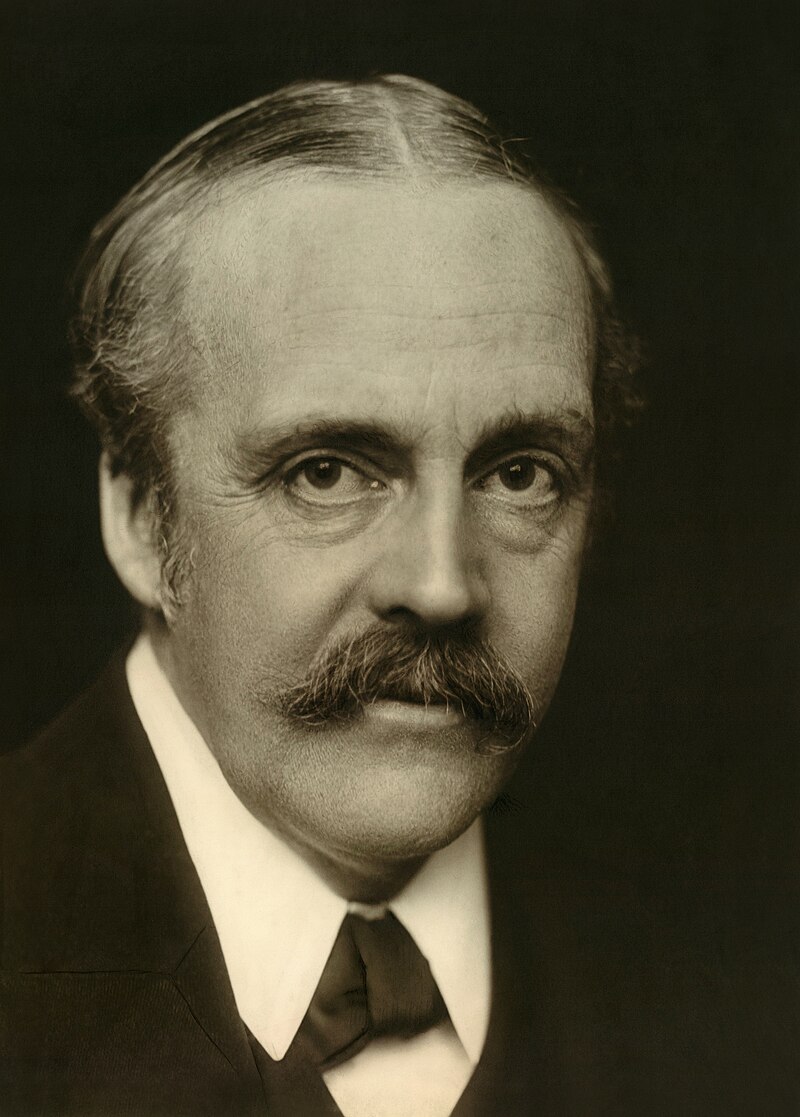
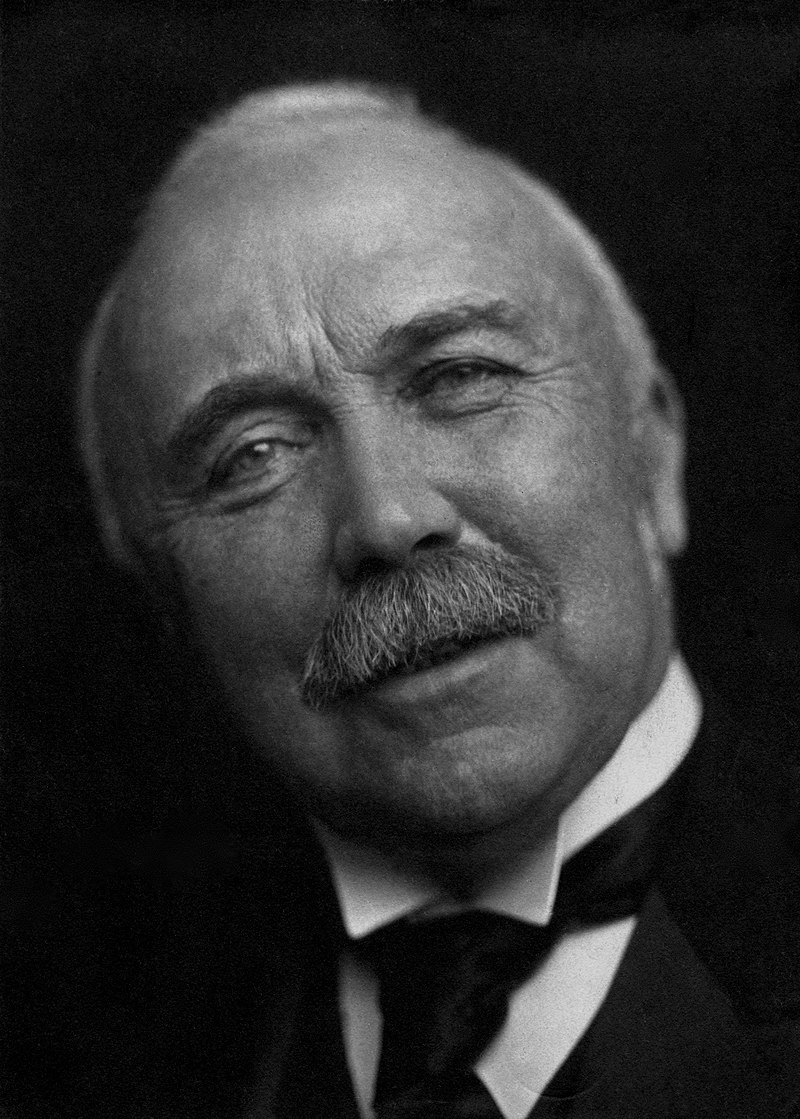
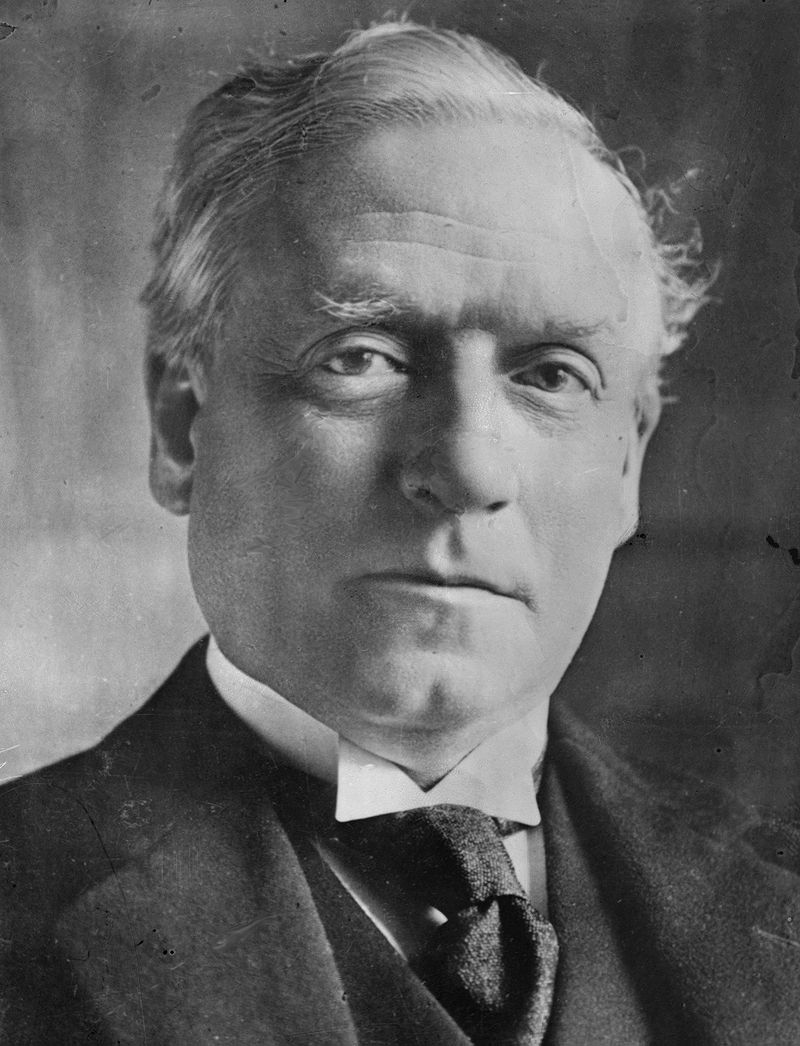
LIBERAL PARTY FROM 1902 TO FIRST WORLD WAR
- Arthur Balfour succeeded his uncle, the Marquess of Salisbury, as Prime Minister in 1902. Key milestones of Balfour’s tenure as Prime Minister encompassed the implementation of the 1902 Education Act and the resolution of the Boer War. When Balfour resigned in 1905, the issue of Tariff Reform caused a division in his cabinet.
1902 Education Act
The 1902 Education Act, also called the Balfour Act, was a contentious Act of Parliament that established the framework for primary education in England and Wales for 40 years.
Tariff Reform
British fiscal policy aimed at discontinuing the country’s commitment to free trade by implementing protective tariffs on imported goods.
- When Balfour resigned in 1905, the issue of Tariff Reform caused a division in his cabinet. As a result, Edward VII asked Campbell-Bannerman to create a new ministry. Campbell-Bannerman agreed, and in the subsequent 1906 general election, the Liberal Party achieved a resounding win.
- Significant legislation enacted within the initial months of assuming office comprised the Trades Disputes Act, which was a British legislation that granted trade unions protection from accountability for damages resulting from strike actions, and the Provision of School Meals Act, an Act to make provision for Meals for Children attending Public Elementary Schools in England and Wales.
- Campbell-Bannerman’s health deteriorated significantly, leading to his resignation on 4 April 1908. Unfortunately, he passed away just 18 days later. Herbert Henry Asquith succeeded him as Prime Minister. Asquith designated David Lloyd George as the Chancellor of the Exchequer.
- Lloyd George had long been a staunch critic of the Poor Law in Britain. He was resolute in his intention to take decisive measures that, in his own words, would eradicate the workhouse’s oppressive influence from the impoverished residences.
- He advocated for providing a guaranteed income to individuals who could no longer work. Lloyd George’s Old Age Pensions Act granted a weekly allowance to anyone aged 70 and over. To finance these pensions, Lloyd George had to increase government revenues by an additional £16 million annually.
- In 1909, Lloyd George made a public declaration that later became recognised as the People’s Budget. This encompassed tax hikes. While those with lower incomes were required to pay 9 pence for every pound earned, those with annual incomes exceeding £3,000 were obligated to pay 1 shilling and 2 pence for every pound earned.
- Additional measures encompassed a rise in inheritance taxes on the assets of affluent individuals and substantial levies on gains derived from the possession and transaction of real estate. Additional advancements in Lloyd George’s budget encompassed the establishment of labour exchanges and the implementation of a children’s allowance on income tax.
- In response to the widespread unpopularity of the House of Lords among the British populace, the Liberal government implemented measures to diminish its authority.
- The 1911 Parliament Act significantly reduced the authority of the House of Lords. Their authority to obstruct the approval of ‘money bills’ was revoked, and their capacity to impede other legislation was limited to three parliamentary sessions.
- When the House of Lords sought to impede the progress of this legislation, Prime Minister Asquith appealed to George V for assistance.
- In 1912, Hilaire Belloc, a contributor to the political weekly publication The Eye-Witness, levied accusations of corruption against Lloyd George, Herbert Samuel and Rufus Isaacs. It was proposed that the men had gained a financial advantage by purchasing shares based on their awareness of a government contract awarded to the Marconi Company to construct a series of wireless stations.
- Despite the parliamentary inquiry uncovering evidence that Lloyd George, Herbert Samuel and Rufus Isaacs had personally benefited from the government’s policies, it was determined that the individuals were not guilty of corruption.
- In late July 1914, the British government realised the nation was on the brink of a conflict with Germany. The progressive faction of the Liberal Party expressed dissatisfaction with Lloyd George’s reluctance to challenge Britain’s participation in the First World War. Indeed, he quickly established himself as a prominent player in the government who advocated for intensifying the battle to achieve a swift triumph.
IDEOLOGY
- In the 19th century, the Liberal Party strongly advocated for classical liberalism, encompassing principles such as free trade and limited government intervention in the economy. This ideology is called Gladstonian liberalism after Gladstone emphasised laissez-faire economic policies.
- The Liberal Party advocated for social reform, individual freedom, curbing the authority of the monarchy and the Church of England (with many members being nonconformists), and expanding the right to vote.
- During the early 20th century, the Liberal Party’s position transitioned towards New Liberalism, which can be understood today as social liberalism. This ideology emphasises personal freedom while advocating for government engagement to ensure social welfare.
- The shift in political ideology was most prominently demonstrated by the Liberal government’s administration, led by Asquith and Lloyd George. Their implementation of Liberal reforms during the early 1900s laid the foundation for a rudimentary welfare state.
- The Liberal Party advocated for individualism, free trade and private enterprise, while opposing the centralising and oppressive influence of the state. However, it also implemented policies to prevent abuses of private power, promote social justice, and expand the state’s involvement in education, social welfare and industrial relations.
- The Liberal Party consistently pursued the reformation of the government system, and their changes significantly influenced the development of Britain’s political institutions. Regarding foreign policy, Liberal sentiments were characterised by a commitment to peace and a focus on international cooperation. The party exhibited caution towards imperial development throughout the 19th century and advocated for the self-determination of colonial peoples in the 20th century.
- The most prominent characteristic of the Liberal Party was its decentralised organisational structure. Due to the limited number of its members in Parliament for the majority of the 20th century, the party’s lawmakers and national headquarters had less control over the national organisation than the larger British parties. The local parties controlled the candidate selection process and allowed their members to vote directly for the party head.
Image Sources
- https://en.wikipedia.org/wiki/File:Liberal_Party_logo_(pre1988).png
- https://en.wikipedia.org/wiki/File:Home_life_of_peasants_compared_to_the_middle_class_Wellcome_V0050345.jpg
- https://en.wikipedia.org/wiki/Arthur_Balfour
- https://en.wikipedia.org/wiki/Henry_Campbell-Bannerman
- https://en.wikipedia.org/wiki/H._H._Asquith
Frequently Asked Questions
- What is the Liberal Party?
The Liberal Party in the UK is one of the country's major political parties. It has historically advocated for liberal and progressive policies.
- What are the core principles of the Liberal Party?
The Liberal Party historically stood for individual liberty, social justice, economic liberalism, and political reform. It has supported civil liberties, free trade, and constitutional reform policies.
- What led to the decline of the Liberal Party?
The decline of the Liberal Party began in the early 20th century, with factors such as internal divisions, the rise of the Labour Party, and electoral setbacks contributing to its diminishing influence.
